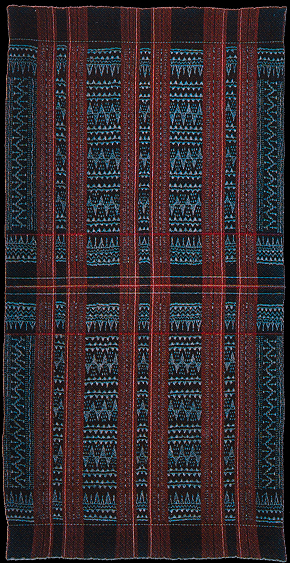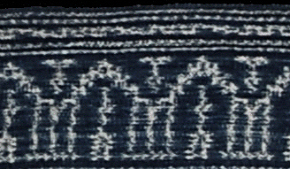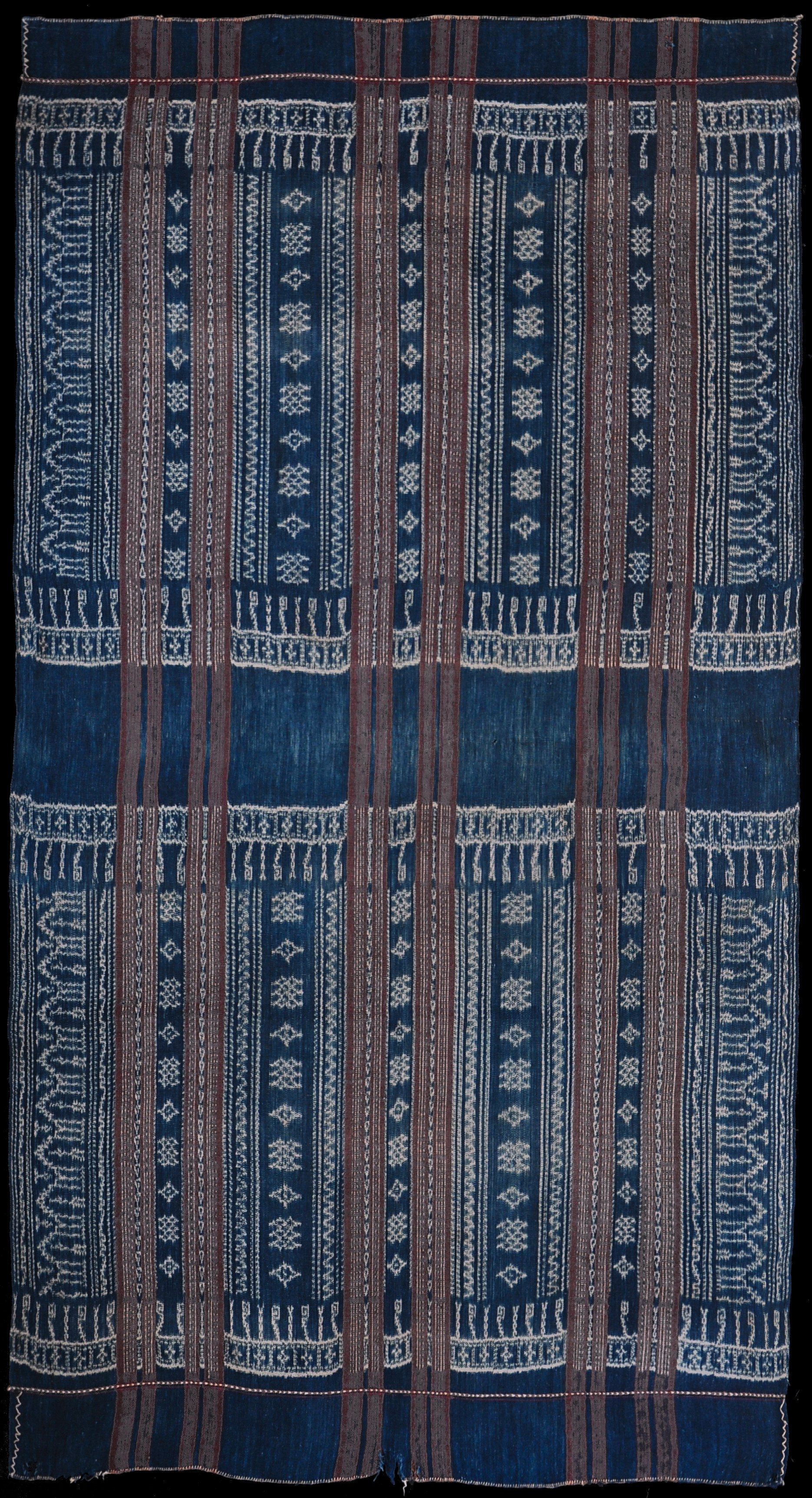| |
 mouse over to magnify mouse over to magnify
| | | | 197 Flores Group, Nage Keo
Sada (men's wrap)
| | Locale: | Village unknown. | | Period: | 1900-1925 | | Panels: | 1 | | Design: | Antique Nage sada, men's cloth, consisting of a single large panel, decorated with four wide bands of ikat and several narrow ones. Significance of the patterns is unknown. Sada may be used to wrap around the hips, and is then called a sada gea, or over the shoulders, then called sada bhago. These cloths stopped being made early in the 20th century when (thus Hamilton) 'changing standards of propriety dictated that these garments be replaced by tubular [i.e. closed] sarongs.' Sada are woven with richer patterning and more dedication to detail than sarongs. | | Size: | 103 x 190 cm (40.5 x 74.8 in) | | Weight: | 590 g (301 g/m2) | | Yarn: | Cotton, hand-spun, fine | | Comment: | Very rare old men's cloth of uncommonly rich design in exceptional condition. The design of all Nage Keo ikat, both male and female, tends to be relatively simple, certainly compared with those of their Ndona and Lio neighbours, but (unlike our PC 108 which is more typical) this one has a rich variety of designs, with many hard to achieve diagonals. While Nage Keo sarongs do appear on auctions now and then, this is one of only two men's cloth in good condition we were ever offered since we began collecting in the mid 1970s. As Hamilton notes: 'A number of these cloths survive in museum collections.' A few tine holes, and a one inch tear in a border. From old Dutch collection. | | Background: | Additional information in chapters on Flores Group and Nage Keo. | | Published: | Ikat Textiles of the Indonesian Archipelago, 2018.
| | Compare: | 052 108 | | Sources: | Very similar to early sada in Ernst Vatter collection depicted in Barnes, Ostindonesien im 20. Jahrhundert, Abb. 194. Very similar to sada in Khan Majlis's contribution to Völger and Von Welck, Indonesian Textiles, Fig. 131, erroneously described as panel for sarong - an error which cannot be ascribed to lack of expertise so must be due to a filing error. Very similar to sada in Musée d'Ethnographie Neuchâtel depicted in Marval and Breguet, Au fil des îles, No. 78. Similar to early 20th C. sada in Tropenmusem, Nr. TM-1772-1152, though more ornate. Also very similar to perhaps younger, less powerfully designed sada depicted in Hamilton, Gift of the Cotton Maiden, Fig. 5.24. Also see same work, p. 113 - though this piece contradicts Hamilton's generally fitting mention of 'the rather limited range of Nage ikat work'. Vatter's cognate below:

Riders being a common theme in middle Flores, could the pattern in the longitudinal border represent a procession of riders?
 | | |
 ©Peter ten Hoopen, 2025
All rights reserved.
|
|


